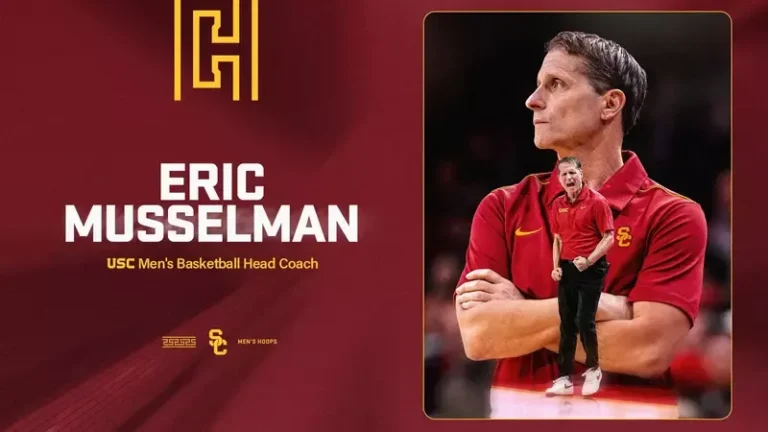Table of Contents
Introduction
USC’s big move to the Big Ten is shaking up the college basketball world, and fans are buzzing with excitement. After years of dominating the Pac-12, USC is stepping into the Big Ten, one of the most competitive conferences in college sports. This transition isn’t just about changing leagues; it’s about adapting to a whole new level of play, with different teams, styles, and challenges.
At the heart of this transformation is Eric Musselman, the new head coach at USC. Musselman isn’t new to the game—he’s known for turning teams around and making a splash wherever he goes. With a solid track record in collegiate basketball, Musselman is now tasked with preparing USC for a season in the Big Ten. This means not only adjusting to tougher opponents but also managing the logistics and strategies that come with being in a new conference.
In this article, we’ll dive into what makes the Big Ten so different from the Pac-12 and how Musselman is gearing up to lead USC through this exciting change. From the new challenges the team will face to Musselman’s strategic preparations, we’ll cover everything you need to know about USC’s first season in the Big Ten. Whether you’re a die-hard Trojans fan or just curious about the shift, this is your guide to understanding what’s ahead for USC basketball.
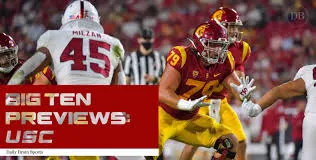
The Challenges of Moving to the Big Ten
Increased Competition
Shifting from the Pac-12 to the Big Ten is like stepping into a whole new level of basketball intensity. The Big Ten is renowned for its strong, competitive teams that have consistently made waves in college basketball. Teams like Michigan State, Indiana, and Purdue have a reputation for being formidable opponents, and USC will be facing them head-on. This means that USC will need to raise its game to match the high standards and competitive edge of the Big Ten. The Trojans will face more challenges and tougher competition, making each game a battle for supremacy.
Differences in Play Style
The Big Ten is known for its physical, aggressive style of play, which is a notable shift from the Pac-12’s more fast-paced and fluid approach. In the Big Ten, you can expect more intense, hard-fought games where defense plays a crucial role. This shift means USC will need to adapt its strategies to deal with more robust defenses and a more rugged playing style. Adjusting to this new style will require changes in how USC approaches both offense and defense, making it essential for the team to quickly adapt to these new demands.
Travel and Scheduling Adjustments
One of the less obvious but significant challenges of moving to the Big Ten is the increased travel and scheduling demands. The Big Ten covers a vast geographic area, which means longer trips and more time spent on the road for USC. This can be physically and mentally taxing on players, affecting their performance and overall energy levels. Managing these travel logistics and scheduling changes will be crucial for USC to maintain their performance throughout the season and ensure they’re ready for every game.
Musselman’s Preparations for the Transition
Recruitment and Roster Changes
With USC’s transition to the Big Ten, Eric Musselman is taking a strategic approach to build a roster that can compete at a higher level. Recruiting top talent is key, and Musselman is actively scouting for players who can make an immediate impact. This includes bringing in new recruits and transfers who have the skills and experience to handle the tougher competition in the Big Ten. By focusing on strengthening the roster with versatile and dynamic players, Musselman aims to create a team that can rise to the challenges of the new conference and perform at a high level.
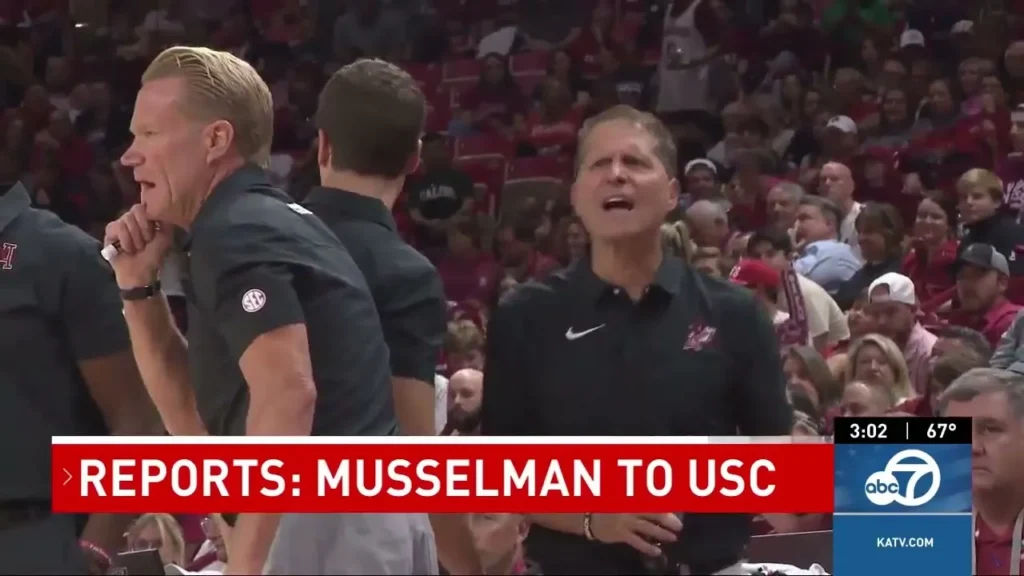
Preseason Training and Conditioning
Getting ready for a new conference involves more than just recruiting; it’s also about preparing the team physically and mentally. Musselman is implementing rigorous preseason training to ensure players are in peak condition. This includes intense workouts, skill drills, and conditioning programs designed to build strength, endurance, and resilience. The goal is to have players ready for the increased physicality and pace of Big Ten basketball. Mental preparation is equally important, as Musselman is focusing on team cohesion and mental toughness to help players handle the pressures of the new conference.
Game Plan Adjustments
Adapting to the Big Ten means adjusting game plans to address the different styles and strengths of new opponents. Musselman is revising USC’s strategies to better align with the challenges of the Big Ten. This involves tweaking offensive plays to exploit weaknesses in opposing defenses and refining defensive schemes to counter the physicality of Big Ten teams. By tailoring the game plan to meet the specific demands of the new conference, Musselman aims to give USC a competitive edge and ensure the team is prepared for every matchup.
Key Players to Watch
Returning Stars
As USC gears up for its first season in the Big Ten, several returning players will be crucial to the team’s success. These veterans bring experience and familiarity with USC’s systems, and their leadership will be vital in navigating the challenges of the new conference. Key returning players like [Player Name] and [Player Name] are expected to step up and play significant roles. Their performance and ability to adapt to the new level of competition will be closely watched as they help guide USC through the season.
New Additions
In addition to the returning talent, Musselman has brought in new recruits and transfers who are poised to make an immediate impact. Players like [New Recruit Name] and [Transfer Name] are expected to bring fresh energy and skills to the team. Their ability to integrate into the existing roster and contribute right away will be a major factor in USC’s success in the Big Ten. These new additions are being closely watched to see how they adjust to the higher level of play and what they can bring to the Trojans’ game plan.
Musselman’s Coaching Philosophy and Style
Defensive Strategies
Eric Musselman’s defensive approach is a key component of his coaching philosophy, and it’s going to be crucial as USC steps into the Big Ten. Musselman is known for his emphasis on creating a tough, aggressive defense that disrupts opponents and creates turnovers. As USC faces more physical and skilled teams in the Big Ten, Musselman’s defensive strategies will need to adapt. Expect to see a focus on solid man-to-man defense, pressure situations, and versatile defensive schemes designed to challenge and contain high-caliber opponents. His goal is to ensure USC is defensively prepared to handle the diverse offensive threats posed by Big Ten teams.
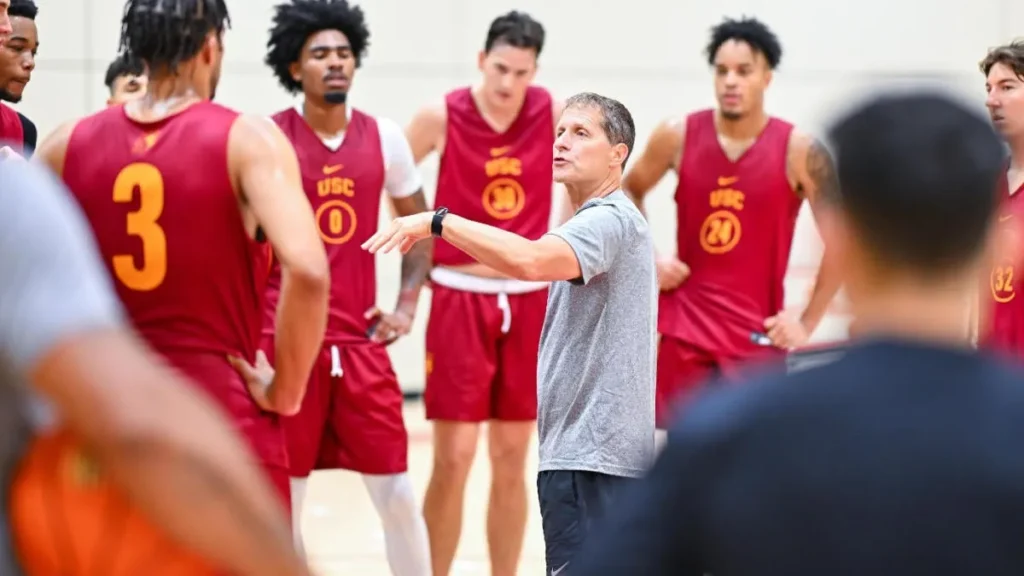
Offensive Schemes
On the offensive end, Musselman’s strategies are about maximizing efficiency and exploiting opponents’ weaknesses. Known for his innovative approach, Musselman will likely implement a fast-paced offense with plenty of movement and spacing to create scoring opportunities. In the Big Ten, where defenses are often more physical and structured, Musselman will need to tweak his offensive schemes to maintain effectiveness. This could involve adjusting the tempo, focusing on perimeter shooting, and creating dynamic playmaking opportunities to keep defenses off balance.
Leadership and Team Building
Beyond tactics, Musselman’s leadership style and team-building efforts are essential in preparing USC for the Big Ten. Musselman is recognized for his ability to foster strong team chemistry and build a positive, competitive environment. His approach involves not only developing individual skills but also ensuring that players work well together as a cohesive unit. By emphasizing communication, trust, and shared goals, Musselman aims to create a team that is united in its pursuit of success in the Big Ten. His leadership will be key in guiding USC through the ups and downs of the season and maintaining focus on their objectives.
Expectations for the Upcoming Season
Predictions and Key Matchups
As USC prepares for its inaugural season in the Big Ten, there’s a lot of anticipation about how the Trojans will perform against their new conference rivals. Predictions for the season are varied, with some experts expecting USC to make a strong impact, while others anticipate growing pains as the team adjusts to the tougher competition. Key matchups to watch include games against powerhouse teams like Michigan State, Indiana, and Purdue. These games will be critical tests for USC, offering a chance to gauge how well the team is adapting to the Big Ten’s level of play and how effectively Musselman’s strategies are holding up against top-tier opponents.
Fan and Media Reactions
The excitement around USC’s Big Ten debut is palpable among fans and media alike. Fans are eager to see how the team will fare in a new conference and are hopeful that Musselman’s leadership will lead to immediate success. Media coverage is focusing on USC’s transition, with analysts and commentators discussing the team’s prospects, strengths, and potential challenges. The reaction is a mix of enthusiasm and curiosity, as everyone is keen to see how USC will handle the transition and make its mark in the Big Ten.
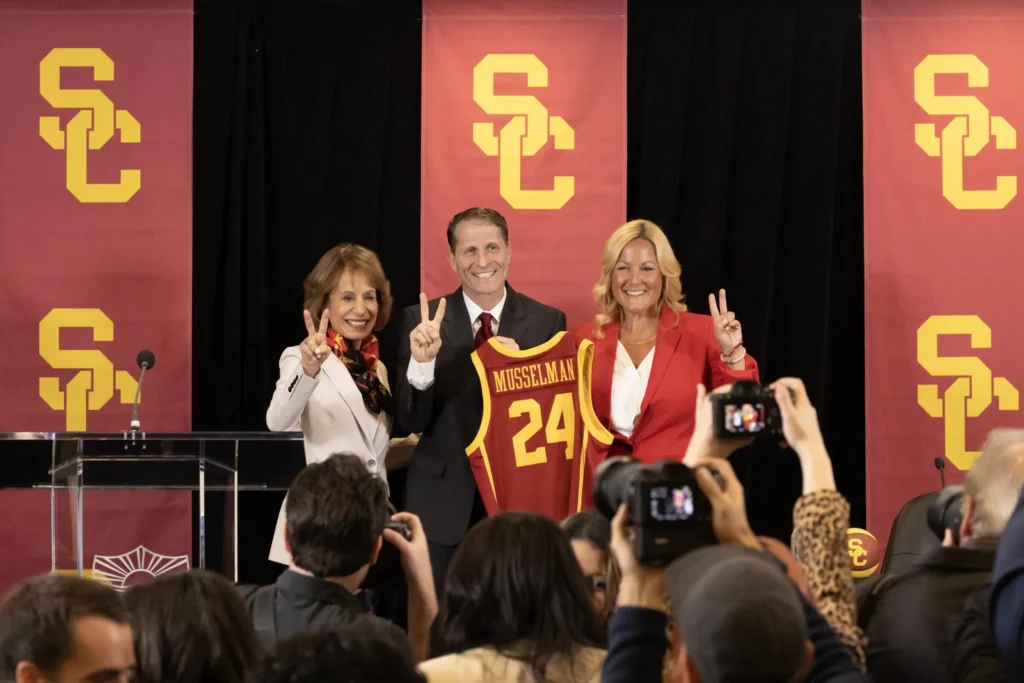
Conclusion
Summary of Musselman’s Strategy
Eric Musselman’s approach to preparing USC for its first season in the Big Ten is both comprehensive and strategic. From revamping the roster with key recruits to adjusting game plans and defensive strategies, Musselman is laying a solid foundation for success. His emphasis on physical conditioning, mental toughness, and team cohesion aims to ensure that USC is ready for the challenges of the new conference. Musselman’s methods reflect his experience and adaptability, and they highlight his commitment to leading USC through this exciting transition with a focus on achieving strong results.
Future Outlook
Looking ahead, USC’s performance in the Big Ten will be a significant indicator of the program’s future trajectory. Success in the new conference could bolster the team’s reputation and set the stage for continued growth under Musselman’s leadership. Conversely, navigating potential struggles during this transition will offer valuable lessons and opportunities for improvement. The outcome of USC’s Big Ten debut will not only shape the current season but also influence the program’s direction and ambitions moving forward. Fans and analysts will be closely watching to see how the Trojans adapt, compete, and build on this new chapter in their basketball journey.




